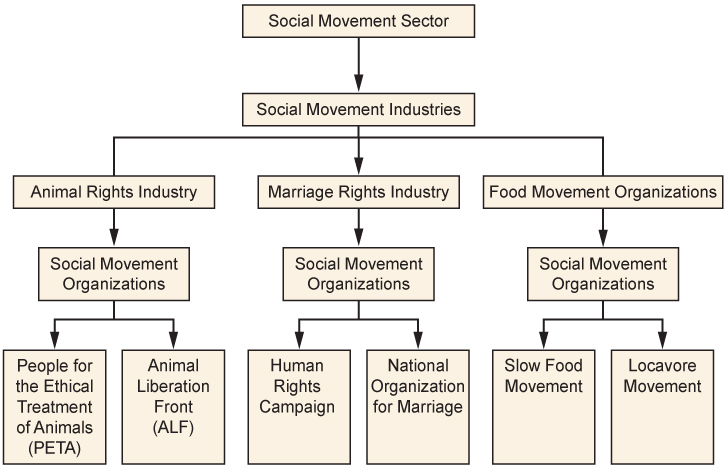| << Chapter < Page | Chapter >> Page > |

Over the past several decades, sociologists have developed the concept of frames to explain how individuals identify and understand social events and which norms they should follow in any given situation (Goffman 1974; Snow et al. 1986; Benford and Snow 2000). Imagine entering a restaurant. Your “frame” immediately provides you with a behavior template. It probably does not occur to you to wear pajamas to a fine-dining establishment, throw food at other patrons, or spit your drink onto the table. However, eating food at a sleepover pizza party provides you with an entirely different behavior template. It might be perfectly acceptable to eat in your pajamas and maybe even throw popcorn at others or guzzle drinks from cans.
Successful social movements use three kinds of frames (Snow and Benford 1988) to further their goals. The first type, diagnostic framing , states the problem in a clear, easily understood way. When applying diagnostic frames, there are no shades of gray: instead, there is the belief that what “they” do is wrong and this is how “we” will fix it. The anti-gay marriage movement is an example of diagnostic framing with its uncompromising insistence that marriage is only between a man and a woman. Prognostic framing , the second type, offers a solution and states how it will be implemented. Some examples of this frame, when looking at the issue of marriage equality as framed by the anti-gay marriage movement, include the plan to restrict marriage to “one man/one woman” or to allow only “civil unions” instead of marriages. As you can see, there may be many competing prognostic frames even within social movements adhering to similar diagnostic frames. Finally, motivational framing is the call to action: what should you do once you agree with the diagnostic frame and believe in the prognostic frame? These frames are action-oriented. In the gay marriage movement, a call to action might encourage you to vote “no” on Proposition 8 in California (a move to limit marriage to male-female couples), or conversely, to contact your local congressperson to express your viewpoint that marriage should be restricted to male-female couples.
With so many similar diagnostic frames, some groups find it best to join together to maximize their impact. When social movements link their goals to the goals of other social movements and merge into a single group, a frame alignment process (Snow et al. 1986) occurs—an ongoing and intentional means of recruiting participants to the movement.
This frame alignment process has four aspects: bridging, amplification, extension, and transformation. Bridging describes a “bridge” that connects uninvolved individuals and unorganized or ineffective groups with social movements that, though structurally unconnected, nonetheless share similar interests or goals. These organizations join together to create a new, stronger social movement organization. Can you think of examples of different organizations with a similar goal that have banded together?

Notification Switch
Would you like to follow the 'Introduction to sociology 2e' conversation and receive update notifications?